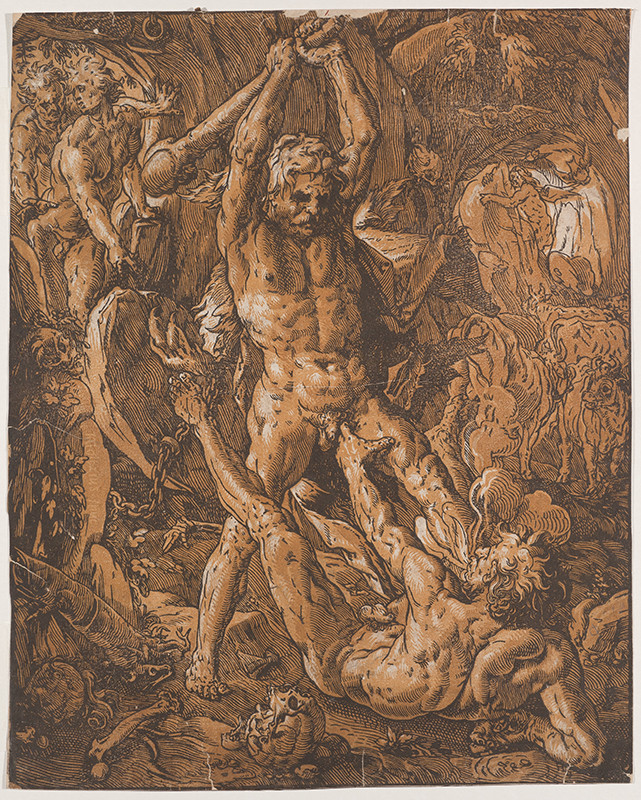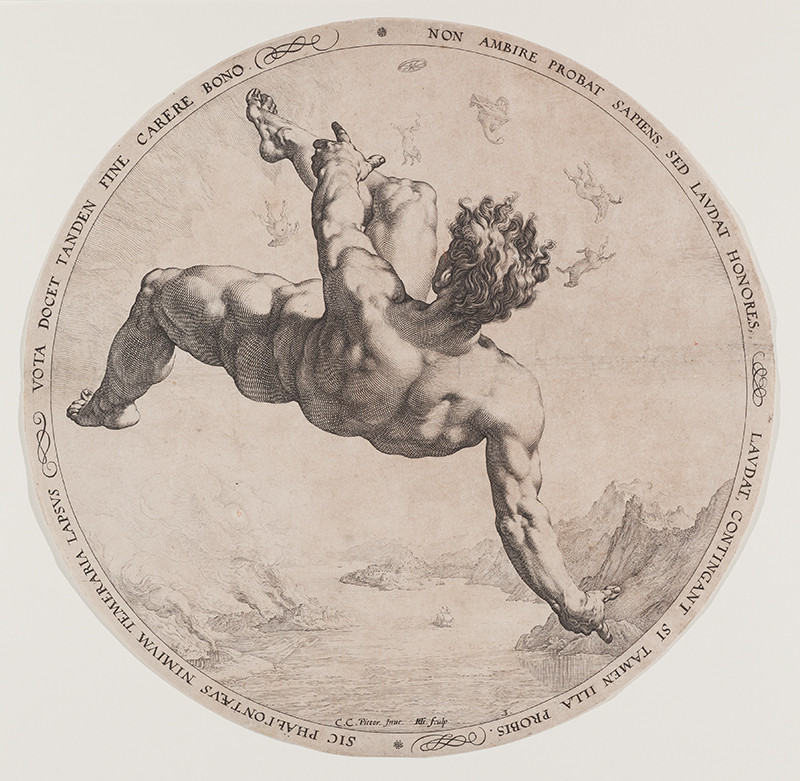
Hendrick Goltzius is one of the key figures of Netherlandish Mannerist art of the second half of the 16th century. The artist specialized in engraving and drawing. After 1600, he relinquished engraving, possibly due to health problems, and turned to painting. He was active in Haarlem where he headed a prominent publishing house; his engravings were widely disseminated throughout Europe, earning him admiration. The chiaroscuro woodcut Hercules and Cacus, characterized by strong contrasts between light and dark, is Goltzius’s most impressive and also the sole dated print executed in this technique. The artist inscribed the plate only as inventor, which could have therefore been engraved after his design by one of his assistants. The work depicts a mythological scene known from the legendary tale about the founding of Rome. After fulfilling one of his twelve labours (he was to take the cattle from the monster Geryon), Hercules led the herd away. The giant Cacus, the son of Vulcan, took advantage of Hercules’s sleep, stole the herd and hid it in a cave, blocking its entrance with a boulder. The engraving depicts Hercules at the moment enters the cave and is about to hit Cacus with his club to kill the monster, who is belching out his last fiery breath. At the top right, Hercules is shown removing the boulder to lead the herd out of the cave.

